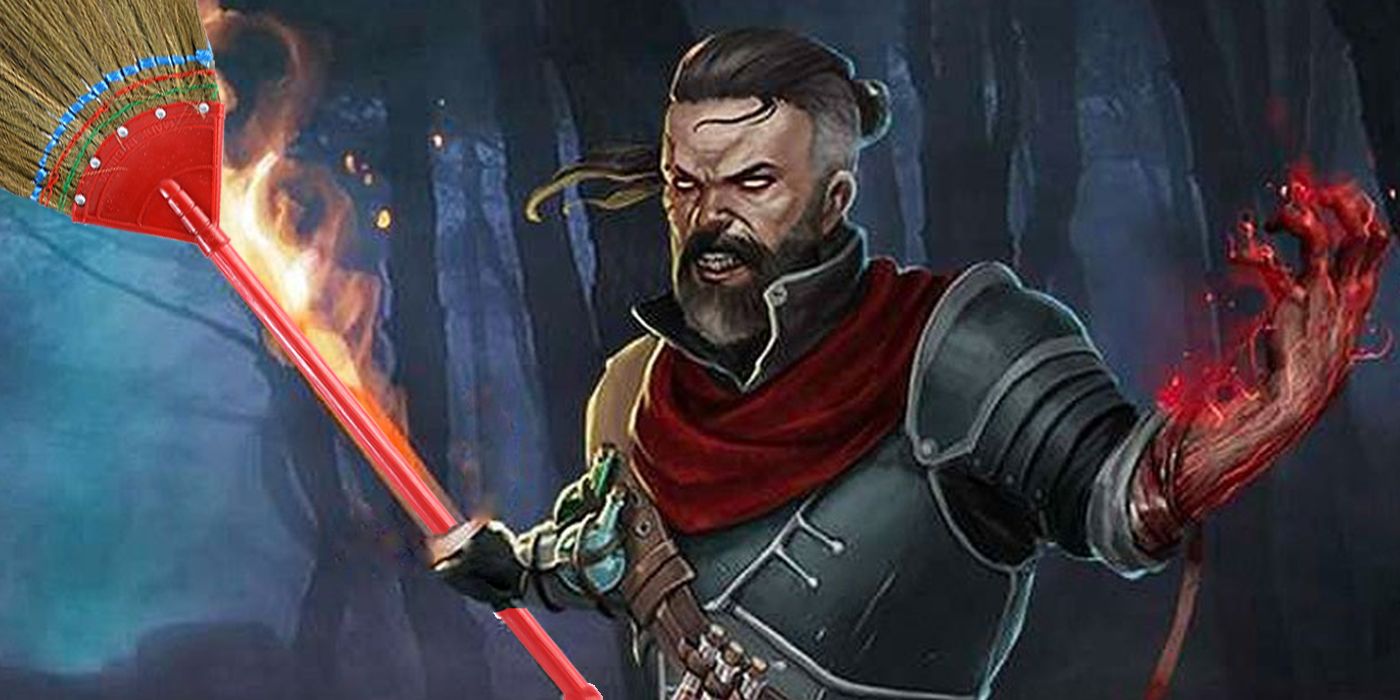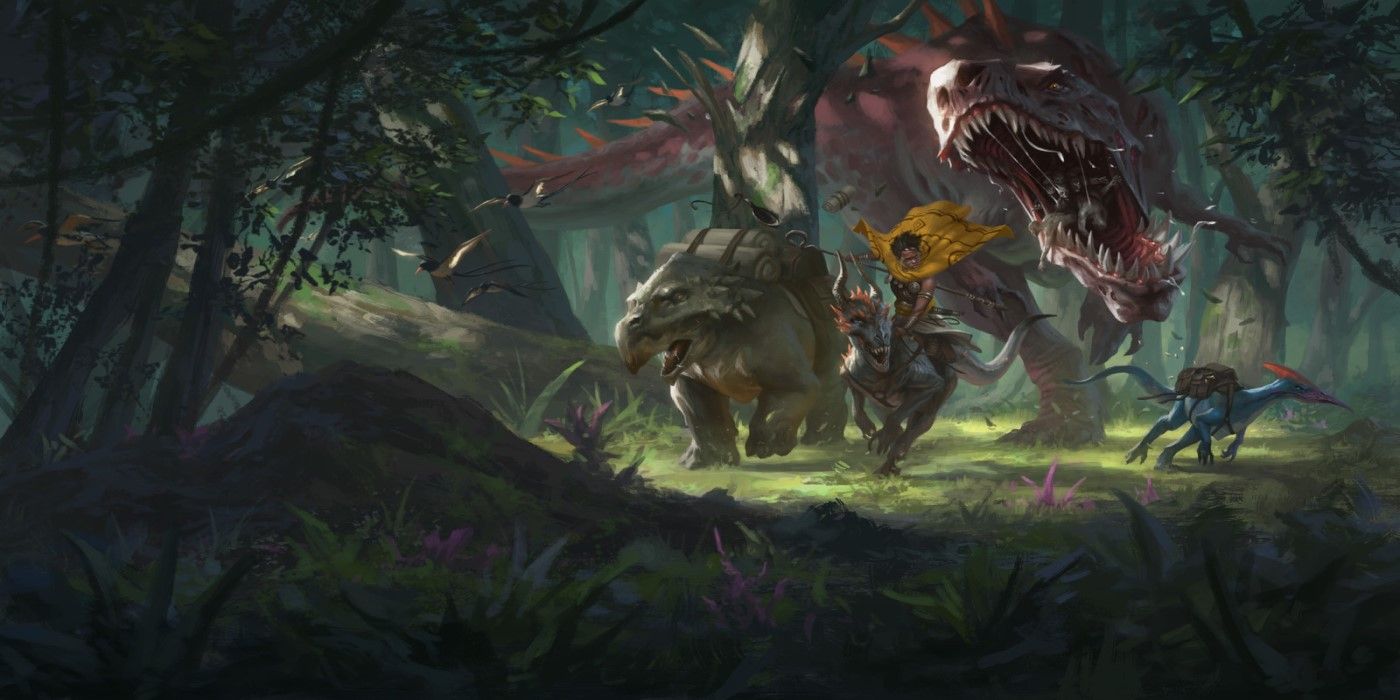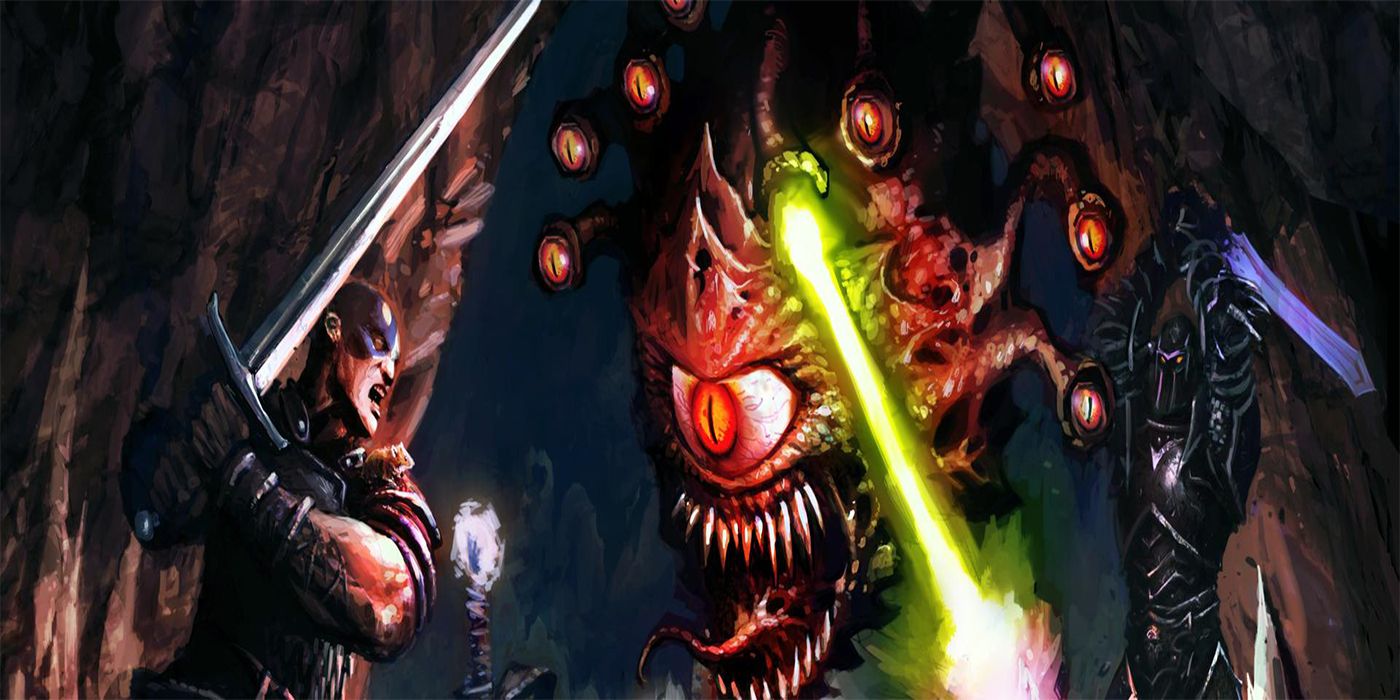Dungeons and Dragons 5e: How To Make Weird But Effective Characters

Playing the typical cookie-cutter character in Dungeons and Dragons can, at times, get pretty boring. There are plenty of options to choose from as far as classes and backgrounds, but for those that play frequently, die a lot, or are indecisive, those options can get burned through pretty quickly. As such, it makes sense that some players would want to break that mold and try a character with a bit more flair, yet nailing down the proper way to do so can be pretty difficult.
Before creating a weird character, it's important to touch base with the party's Dungeon Master, and maybe the rest of the group, to ensure that it won't cause problems during the D&D campaign. Sure, it can be fun to play as a Fire Genasi duel-wielding brooms, but it can also ruin the narrative and pacing, one of the things Dungeon Masters hate most. Just be sure everyone is on the same page before creating a character that may not mesh with the rest of the party.
Also, don't try to make weird characters out of the gate. Play at least a few campaigns before diving into something strange, as otherwise, the character is as good as dead. It takes a solid understanding of Dungeons and Dragons' intricacies to make a weird but effective character. Don't dive in while just getting started with Dungeons and Dragons, or it'll likely ruin the campaign for everyone at the table.

With that out of the way, the first thing to nail down is the general archetype of the character that will eventually be on the character sheet. Fundamentally, will they be using melee abilities, magic, or some weirder form of combat skill? What makes them unique? Did childhood trauma lead to them believing they're a superhero, making them a stellar hand-to-hand fighter? Are they convinced that they can communicate with cows, making them a relatively charismatic animal handlers? What's the character's specific quirk? Finding bonds, ideals, and flaws, strangely enough, is the best way to start with weird characters. It creates a solid jumping-off point for the rest of the details on the character sheet. Many of the methods to make a compelling villain also apply to making weird heroes.
One of the best things about Dungeons and Dragons is that everything has stats. For those who want to play a weird creature from the Monster Manual, it's easily done. It may not be able to speak common, but it is possible. With enough research and some approval from the Dungeon Master, pretty much any character is possible. The single greatest aspect of Dungeons and Dragons is its freedom, the ability to craft anything with the only limitation being a player's imagination. That, and the Dungeon and Dragons memes that weird characters lead to.
Once the character has a few overarching details, try to relate that to the class that makes the most sense. If one doesn't exist, talk to the DM about trying to find a homebrewed D&D class, or potentially even making a custom one, for those with the knowledge to do so. It's also okay to multiclass, especially for strange characters. Being able to mix and match is one of the best things about Dungeons and Dragons, and it can make it far easier to craft a character by doing so, both for the variety of abilities and the roleplaying elements that come along with it.

Speaking of roleplaying, it's important to stay in character at the table. Doing so will often net extra inspiration dice from the DM, which can be crucial for a strange character, as it can be difficult to find good feats for odd characters early on. Extra inspiration die will help level the playing field somewhat, granting an extra bonus to some key rolls, and, not to mention, the role-playing elements are the best part of weird characters, more often than not. It will take some time to learn how to roleplay like a pro, but after a few sessions of learning the character, it should start to come naturally. Just be careful not to dominate the game with the character's antics, or the rest of the party may steadily start to hate it.
Plan a list of gear that a character will need early on. If the character's entire gimmick revolves around using a broom to battle their enemies, consider having it enchanted into a flying broomstick, which will allow the character a better opportunity to escape if things get a little overwhelming. For characters that will normally be using improvised weapons, be ready to try and convert that weapon into something that resembles a normal martial weapon. For instance, maybe that fancy broomstick has a spearhead on it, allowing it to be classified as a spear. There will, inevitably, be some careful bending of the rules when it comes to weird characters. Luckily, there are also great magic items for every class.
Depending on the type of character, it's probably best to stay close to support characters for the first few combat encounters. While some strange characters have solid AC scores and decent health, most will be unequipped for the horrors of war early on. That isn't the worst thing, there are quite a few squishy characters in the world of Dungeons and Dragons, but it's certainly something to look out for. The last thing a player will want is to invest in a strange new character only for it to be reduced to a pile of ash during the first session. Typically, the weirder a character gets the worse a character will get, at least as far as combat prowess is concerned. At least weird characters make combat more compelling, though.
Perhaps the most important thing to remember with weird characters is that its okay to fail. Not every experiment will be a success, and it's okay to go back to a more grounded character if something doesn't work out. A key part of Dungeons and Dragons is experimentation, and there are few ways better to experiment than with weird characters. Entire campaigns have been designed around it, and it's definitely worth exploring what's out there, as it can make a campaign feel like an entirely new experience.

Post a Comment